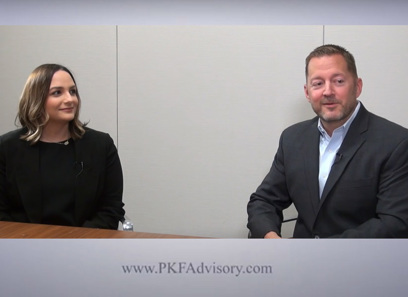M&A Outlook: Analyzing the Influence of Economic Conditions on Mergers and Acquisitions
M&A Outlook: Analyzing the Influence of Economic Conditions on Mergers and Acquisitions
Blog Article
The Impact of Mergers and Acquisitions on Market Dynamics and Competitors
The landscape of mergings and procurements offers an intricate interaction in between promoting development and possibly weakening competitive stability within markets. As business pursue calculated positionings to improve effectiveness and advancement, the implications on customer choice and market rates warrant mindful scrutiny.
Overview of Mergers and Acquisitions
Mergers and purchases (M&A) play a critical function in shaping the landscape of contemporary business, as companies look for to boost their affordable edge and achieve strategic purposes. M&A transactions entail the consolidation of firms or possessions with different monetary deals, including mergers, where two companies incorporate to create a brand-new entity, and purchases, where one company acquisitions one more outright. These tasks are driven by a myriad of variables, such as the pursuit of synergies, diversity of item offerings, and the wish to enter brand-new markets.
The M&A process generally includes several phases, including critical planning, due persistance, negotiation, and assimilation (Emerging Market Opportunities). Firms carry out extensive analyses to identify possible targets that line up with their development methods and assess the functional and monetary effects of a deal. Regulative factors to consider likewise play a critical duty, as antitrust legislations are developed to avoid monopolistic practices that might harm competitors
As organizations navigate the intricacies of M&A, the end results can dramatically influence stakeholders, consisting of clients, staff members, and shareholders. Comprehending the dynamics of M&A is important for evaluating their ramifications within the wider context of market actions and affordable positioning.
Favorable Results on Market Dynamics
The debt consolidation of firms via acquisitions and mergers can lead to significant favorable results on market characteristics. Among the key benefits is the improvement of functional performances. By incorporating resources, firms can simplify processes, minimize redundancies, and achieve economic situations of scale, eventually boosting and reducing expenses success. This performance can convert into reduced prices for customers, cultivating a much more affordable market setting.

In addition, raised market share arising from mergings can supply firms with greater bargaining power with distributors and providers, promoting enhanced conditions that can benefit the total supply chain.
Negative Effects for Competitors

Additionally, the elimination of rivals via procurements can suppress technology. When vital players merge, smaller companies might struggle to contend, bring about a homogenization of solutions and items. The resultant absence of competitors can produce an environment where remaining firms have much less incentive to purchase study and advancement.
Additionally, mergings can produce barriers to access for new firms, as the merged entity might take advantage of its enhanced sources to control the marketplace. This can discourage potential participants, thus restricting competition and innovation in the lengthy term.
Ultimately, while mergings and procurements can offer tactical benefits, their possible to threaten competitors necessitates cautious consideration of their wider effects on the market characteristics. The equilibrium in between development and affordable honesty stays a critical worry in examining such company methods.
Governing Considerations and Oversight
Regulative structures play an essential function in forming the landscape of mergers and acquisitions, making sure that market characteristics stay affordable and fair. These frameworks are made to stop anti-competitive actions and to protect consumer passions. Regulatory bodies, such as the Federal Trade Payment (FTC) in the United States and the European Compensation in the EU, examine recommended purchases and mergers based upon their prospective effect on competitors within the marketplace.
The assessment procedure includes a detailed investigation of the market share, possibility for monopolistic techniques, and the overall economic ramifications of the deal. Regulatory authorities often impose conditions or need divestitures to minimize problems over reduced competition, making sure that the joined entity does not control the market unfairly.
Furthermore, transparency is a crucial part of governing oversight. Stakeholder engagement, consisting of public assessments, enables for diverse point of views to be taken into consideration in the decision-making procedure. This joint strategy aids to cultivate a well balanced governing setting that advertises advancement while securing affordable methods. Eventually, efficient regulatory considerations are crucial in keeping market honesty and motivating healthy and balanced competition in the face of evolving business landscapes.
Study and Real-World Instances
Often, study of remarkable mergings and acquisitions show the profound impacts these deals can have on market dynamics. The 2000 merger in between AOL and Time Detector works as an archetype, where the prepared for harmonies failed, causing an extreme decline in investor value. This case emphasizes exactly how social misalignments and overestimation of market possibility can disrupt competitors.
On the other hand, the procurement of WhatsApp by Facebook in 2014 exhibits a successful assimilation that reshaped the communication landscape. Emerging Market Opportunities. Facebook leveraged WhatsApp's customer base to boost its service offerings, properly increasing its market dominance while preserving competition in the messaging field
An additional significant situation is the merging of Exxon and Mobil in 1999, which developed one of the world's biggest oil firms. This debt consolidation resulted in higher efficiencies but increased problems about decreased competitors in the energy market, motivating regulative scrutiny.
These examples highlight the complex interplay in between mergings and procurements and market characteristics, showcasing both the possible advantages and challenges that can arise, inevitably shaping competitive landscapes across industries.
Conclusion
Mergers and acquisitions play a crucial duty in forming market dynamics and competition. Effective governing oversight is necessary to guarantee that the advantages of M&An activities are made the most of while minimizing unfavorable impacts on market competitors.
One major worry is the potential for minimized market competition, as mergings typically lead to the loan consolidation of market power amongst fewer gamers. Governing bodies, such as the Federal Profession Compensation (FTC) in the United States and the European Compensation in the EU, review suggested mergers and acquisitions based on their potential influence on competitors within the market.

Mergers and purchases play a critical duty in shaping market dynamics and competition. Reliable regulative oversight is important Economic factors influencing M&A to guarantee that the benefits of M&A tasks are made the most of while alleviating adverse impacts on market competitors.
Report this page